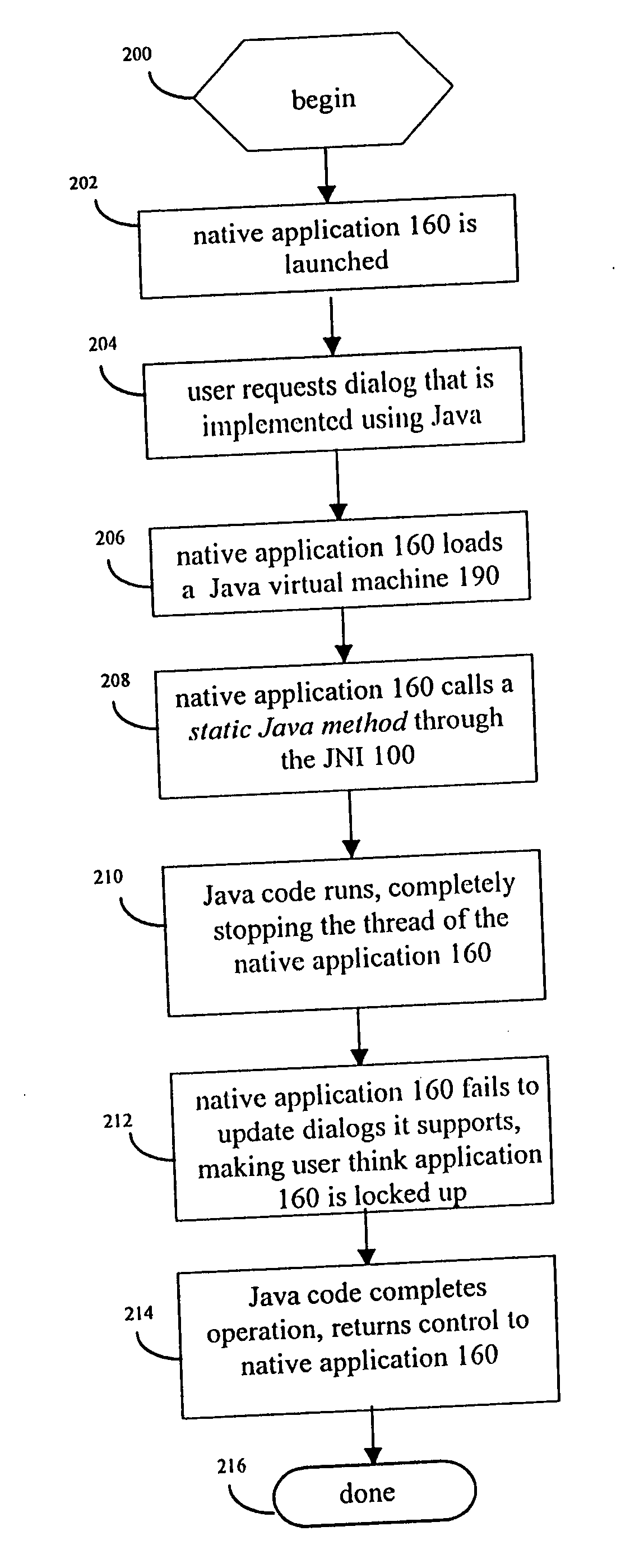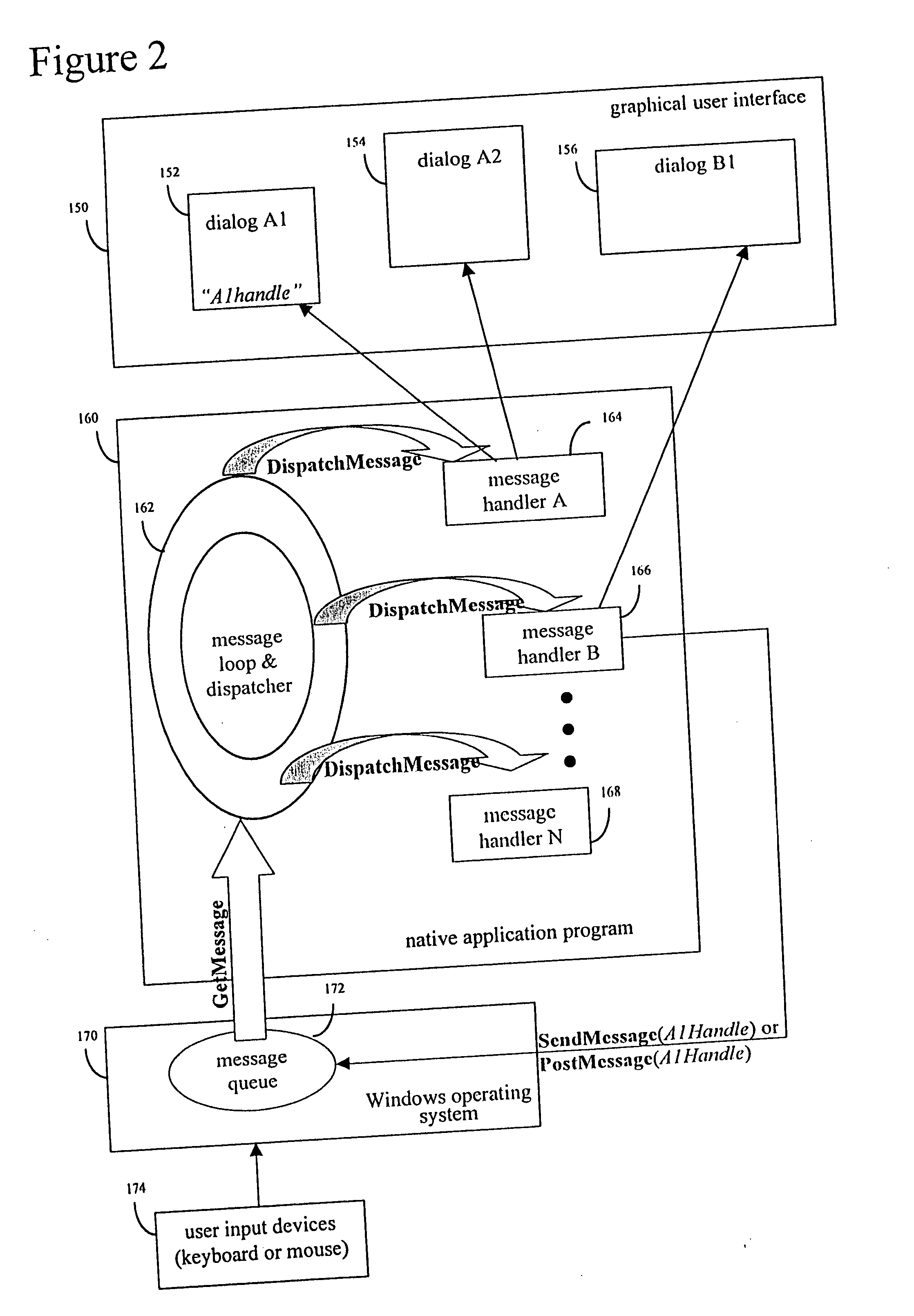Java and native application window integration
a technology of native application and integration, applied in multi-programming arrangements, instruments, computing, etc., can solve problems such as insufficient jni in some environments, output of these compilers was usually understood, and insufficient jni interaction mechanism provided by jni for native code and java-based cod
- Summary
- Abstract
- Description
- Claims
- Application Information
AI Technical Summary
Problems solved by technology
Method used
Image
Examples
Embodiment Construction
[0036] The illustrative system provides a method for adding functionality, particularly user interface support, to native code using the Java programming language. For purposes of explanation, specific embodiments are set forth to provide a thorough understanding of the present invention. However, it will be understood by one skilled in the art, from reading the disclosure, that the invention may be practiced without these details. Further, although the embodiments are described in terms of Windows-based application programming, most, if not all, aspects of the system illustrated apply to interfacing any high-level program to the Java language. Moreover, well-known elements, devices, process steps, and the like, are not set forth in detail in order to avoid obscuring the disclosed system.
[0037] The Java Native Interface Specification, a product of Sun Microsystems of Palo Alto, Calif., published on May 16, 1997 and available on the world-wide-web at http: / / www.javasoft.com / products / ...
PUM
 Login to View More
Login to View More Abstract
Description
Claims
Application Information
 Login to View More
Login to View More - R&D
- Intellectual Property
- Life Sciences
- Materials
- Tech Scout
- Unparalleled Data Quality
- Higher Quality Content
- 60% Fewer Hallucinations
Browse by: Latest US Patents, China's latest patents, Technical Efficacy Thesaurus, Application Domain, Technology Topic, Popular Technical Reports.
© 2025 PatSnap. All rights reserved.Legal|Privacy policy|Modern Slavery Act Transparency Statement|Sitemap|About US| Contact US: help@patsnap.com



